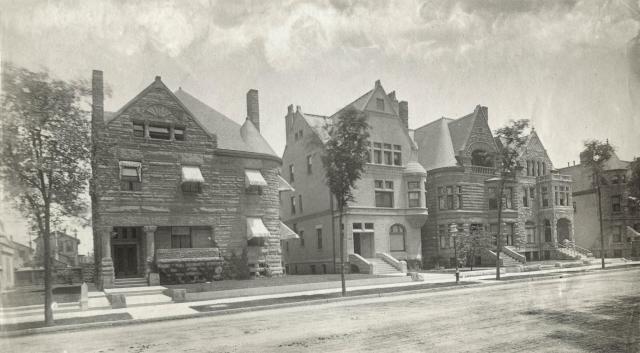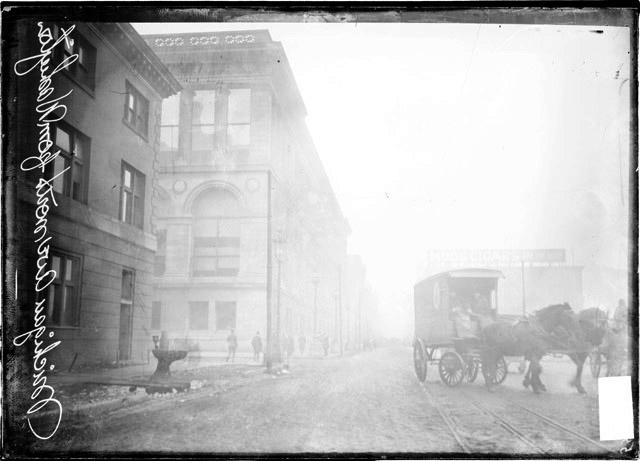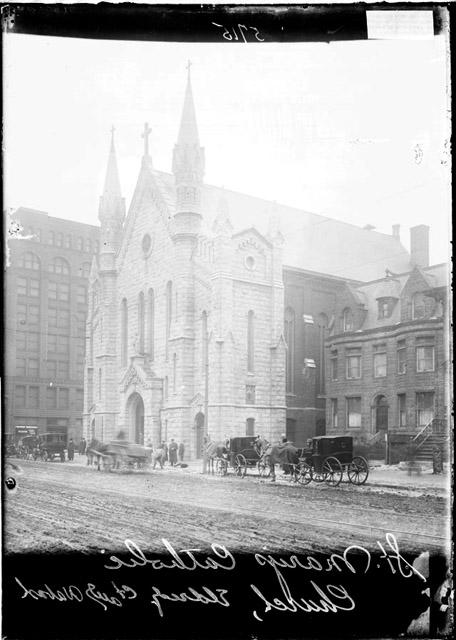Inspired by a research question, Head Archivist Heidi Marshall and I sat down to discuss what Columbia was like around the turn of the 20th century. How were the administration, the curriculum, and the location of the school, then titled The Columbia School of Oratory, different than Columbia College Chicago’s today?
By 1895 the college comprised of about 85 students and seven teachers, including co-founders Mary Blood and Ida Riley themselves. The institution offered lecture series, faculty recitals, and guest reading performances in addition to courses. Between 1895 and 1900, the school offered a four-year professional degree, which thirteen students achieved. After 1900, programs offered included a two-year undergraduate degree, a one-year graduate degree, and courses for summers and evenings. At that point, enrollment was around 100 students between the degree programs and around 50 students in each the summer and evening courses.

The curriculum included physical training, such as these examples of “positions to be avoided” from “Effective Public Speaking: Matters of Personal Appearance.”
Columbia was originally founded with the purpose of training students in elocution and expression. Blood and Riley modeled the curriculum on the teachings of Charles Wesley Emerson, whom Blood studied under at her alma mater, Emerson College. They believed that students must train in four stages in order to master speech: intellect, emotion, will, and physique. Coursework in the mid-1890s included Physical Training, Bodily Expression, Voice, Literature, English, Drama, Bible, Psychology, and, of course, Public Speaking.
Students of the 1890s also experienced a completely different city life than students today. Columbia’s home from 1895-1916, 64 E. Van Buren Street, did not have dormitories for women, so many students lived in apartments and rented rooms in The Loop and on Michigan Avenue. At the time, there were still single-family homes and two, three-story apartment buildings in the area, like these homes on Michigan Ave. in the 1890s.

2900 S. Michigan, c. 1890s. Courtesy Art Institute Chicago.
A trip to the library may have looked something like this photo, showing the Chicago Cultural Center, which was Chicago’s first central public library, in 1907.

Chicago Cultural Center, 1907. Courtesy of Chicago History Museum.
And near our current building at 916 S. Wabash, stood the Old Saint Mary’s Church, pictured here in 1908.

Old St. Mary’s Church, 1908. Courtesy of Chicago History Museum.
As a current student, I may not take classes with the school’s president or study Blood and Riley’s four principles of speech, but to see the Columbia students knew more than 120 years ago makes me even more excited to participate in the rich history of Columbia College Chicago.
Works Cited
“Psychological Development of Expression,” 2017. Finding aid at the College Archives & Special Collections of Columbia College Chicago, Chicago, IL. http://digitalcommons.colum.edu/casc_fa/18
Columbia College Chicago. “Course Catalog” (1905-1906). Catalogs, College Publications, College Archives & Special Collections, Columbia College Chicago. http://digitalcommons.colum.edu/cadc_coursecatalogs/2
Columbia College Chicago. “Summer Course Catalog” (1893). Catalogs, College Publications, College Archives & Special Collections, Columbia College Chicago. http://digitalcommons.colum.edu/cadc_coursecatalogs/1
Little, Henry Gilman. Hollis, Seventy Years Ago: Personal Recollections. 1894. Reprint. Charleston: BiblioLife, 2009. 170-174. Print.
Wallace, Karl Richards. History of Speech Education in America. New York: Appleton-Century-Crofts, 1954. 305–306, 315. Print.
“Chicago Cultural Center – Architecture and History.” City of Chicago: The City of Chicago’s Official Site, www.cityofchicago.org/city/en/depts/dca/supp_info/chicago_culturalcenter-architectureandhistory.html.
“Michigan Avenue, Looking North, Showing the Main Chicago Public Library on One Side of the Street and a Horse Drawn Van Driving along Michigan Avenue.” Explore Chicago Collections, Chicago, 1907, explore.chicagocollections.org/image/chicagohistory/71/6h4cx9q/.
“Michigan Avenue.” Explore Chicago Collections, Chicago, 1890, explore.chicagocollections.org/image/artic/85/z89314n/.
“St. Mary’s Catholic Church with Horse-Drawn Carriages Driving along the Street and Men Standing on the Sidewalk in Front of the Church.” Explore Chicago Collections, Chicago, 10 Feb. 1908, explore.chicagocollections.org/image/chicagohistory/71/pk07854/


